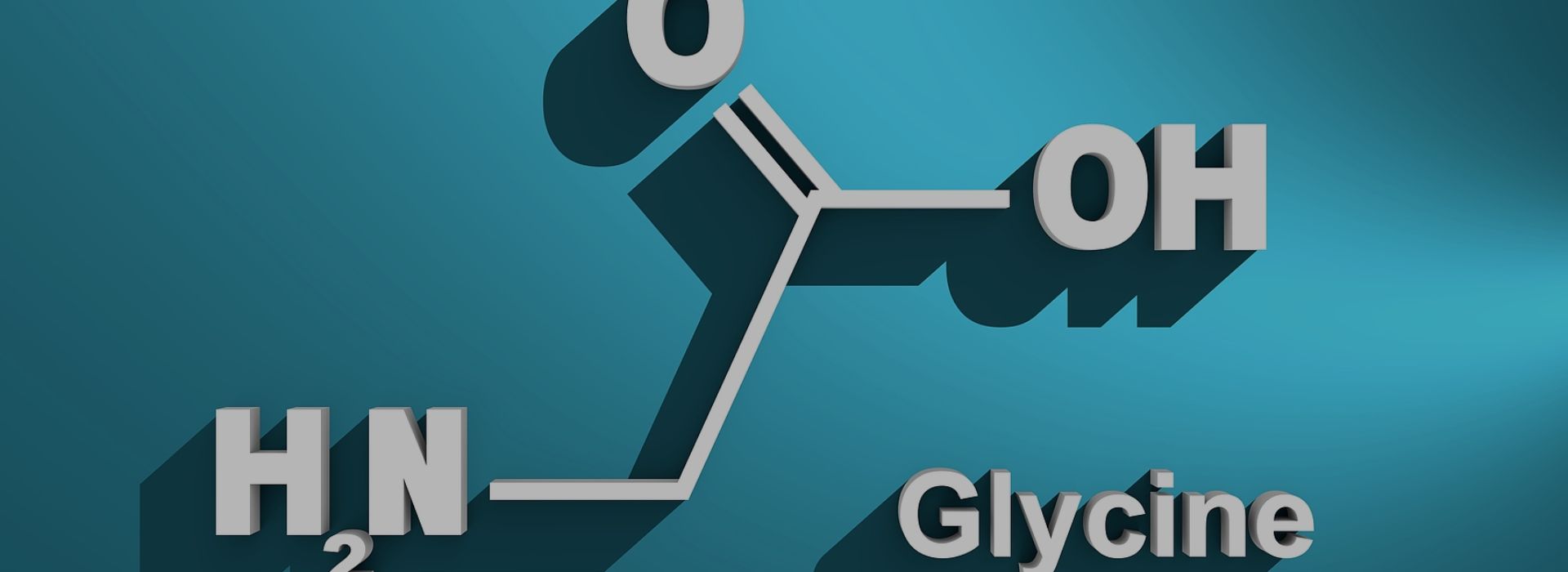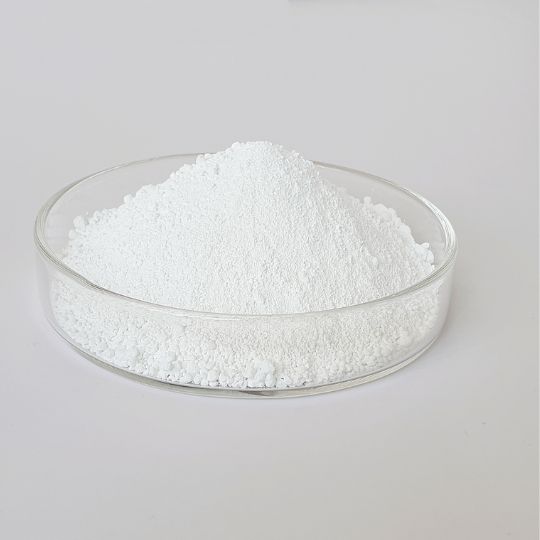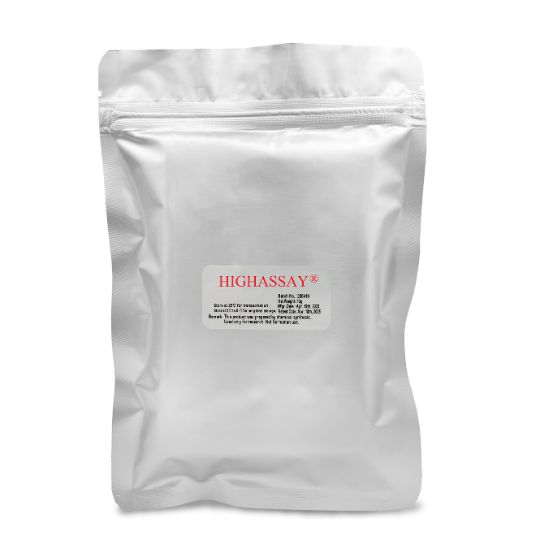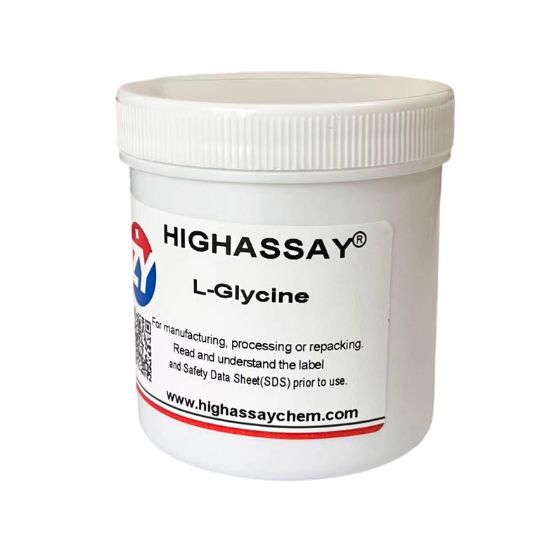A Brief Introduction to L-Glycine
Molecular Formula:C2H5NO2
Molecular Weight: 75.07
CAS No.:56-40-6
Appearance:White to off-white crystalline powder
Regular commercial package: 25kg/drum
What is L-Glycine?
L-Glycine is a simple, non-essential amino acid. Although it can be synthesized naturally, the body’s demand for L-Glycine is insufficient, so it must be obtained through daily diet and supplements. L-Glycine is a major component of collagen. When L-Glycine intake meets the body’s needs, it has a significant impact on our health, especially for middle-aged and elderly individuals. Insufficient L-Glycine can seriously affect the body’s internal functions and efficiency.
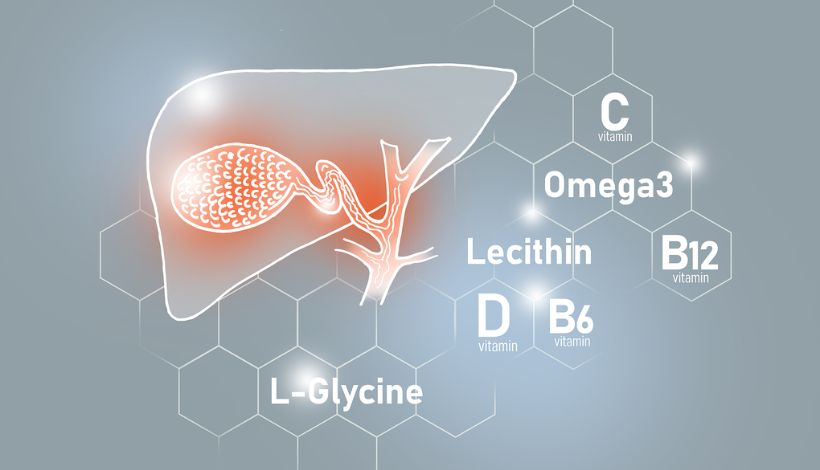

Benefits of L-Glycine
- L-Glycine promotes collagen synthesis and is significantly effective in the recovery of joint cartilage, tendon injuries, and tendonitis in the elderly. It also helps prevent osteoporosis.
- L-Glycine has anti-inflammatory properties and is used to prevent gum inflammation and treat symptoms in cystic fibrosis patients.
- L-Glycine can improve central nervous system problems, such as improving sleep quality. • L-Glycine can promote metabolism and lower blood sugar. It also protects the stomach and intestines.
- L-Glycine has antioxidant properties and can detoxify organs like the liver and kidneys.
If you have any questions about processing L-Glycine, Highassay’s R&D team is here to help.
Application of L-Glycine
Highassay adheres to strict quality control (QC) to produce L-Glycine. Buy L-Glycine in bulk from us now to get competitive market prices.

Due to its properties, L-Glycine is added to a wide variety of cosmetics, such as serums and facial masks. It can slow down skin aging and make skin appear hydrated and firm. Its ingredients are safe and suitable for sensitive skin.

In addition to being used as a nutritional supplement to replenish the body’s L-Glycine needs, it can also be added to foods as a flavoring to enhance the taste and nutritional value of food.
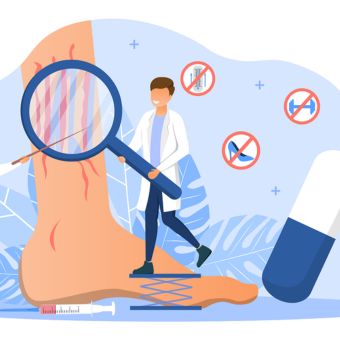
In addition to being used as a reagent in medical research, it can also be used as a pharmaceutical intermediate to treat various diseases, such as chronic enteritis and muscular dystrophy.

In addition to being used in the production of herbicides, it can also be added to animal feed to improve digestion and absorption.
Source and Dosage of L-Glycine
L-Glycine is widely found in everyday foods, including meat, soy products, dairy products, nuts, and seeds. Vegetarians have a less diverse range of sources.
In addition to food, a faster and more effective way is to take an L-Glycine supplement directly. The recommended daily dose for adults is 3-5 grams. Individuals with special needs can increase the dose, but it should not exceed 10 grams. Only an appropriate amount of supplementation is required for optimal absorption by the body without burdening the body. Please choose the dosage you need based on your specific needs.
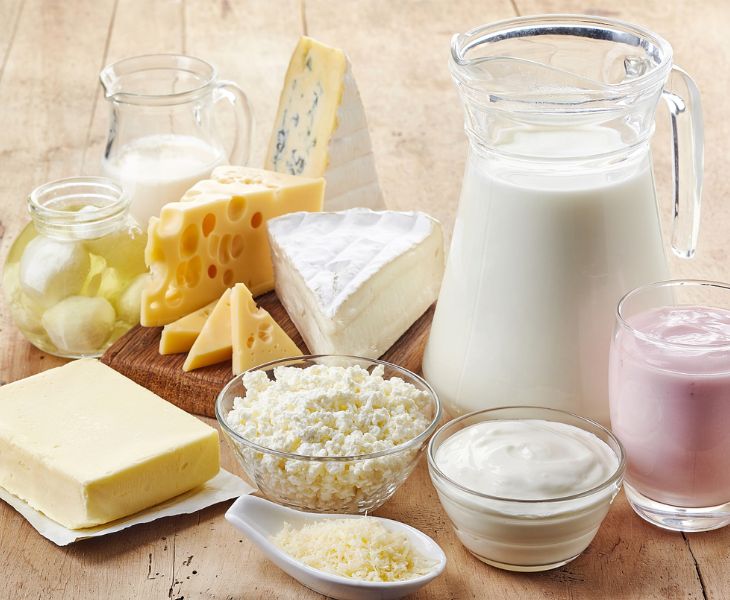
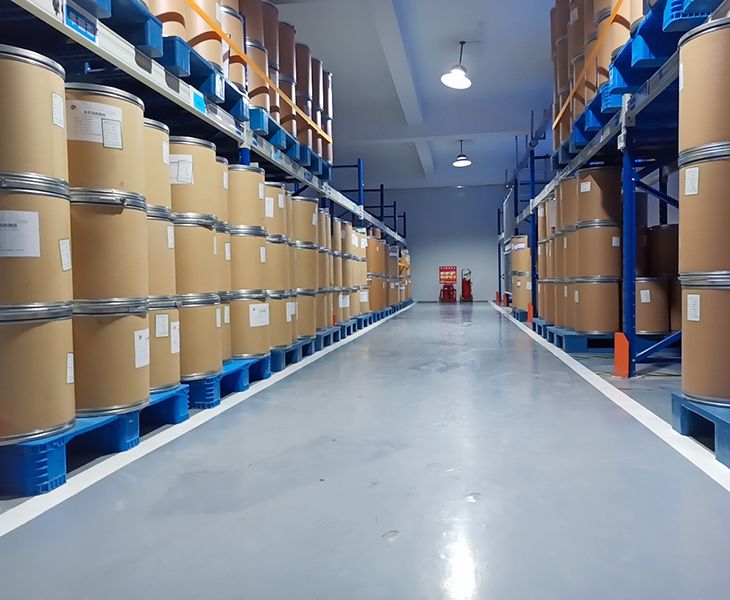
Storage of L-Glycine
- Our products are clearly labeled to ensure you receive the correct product and that it meets your requirements.
- Store away from floors or walls, sealed, and protected from light to protect the product from moisture and contamination.
Because the human body contains sufficient levels of proline and lysine, and commercially available collagen products contain relatively low levels of L-Glycine, choosing L-Glycine supplements directly will be more effective and less expensive.
Magnesium L-Glycine is a combination of inorganic magnesium and L-Glycine and is primarily used to protect the stomach and improve sleep. Magnesium threonate is composed of threonic acid and magnesium ions and is primarily used to enhance gastrointestinal motility, relieve constipation, and improve memory. Therefore, the functions of these two are not mutually exclusive and can be taken together.
L-Glycine Propionylcarnitine is synthesized from Propionyl-L-Carnitine and L-Glycine. It can promote the metabolism of fat in the body and is suitable for athletes to take before exercise to help concentrate attention and maintain muscle strength.
Specification of L-Glycine
| Glycine | CP2020 | EP11 | USP2023 | USP32 | AJI92 | FCC5 |
| Assay | ≥ 99.0% | 98.5-101.0% | 98.5-101.5% | 98.5-101.5% | 98.5-101.0% | 98.5-101.5% |
| PH | 5.6-6.6 | 5.9-6.4 | / | / | 5.9-6.4 | / |
| Specific rotation[a]D20 | / | / | / | / | / | / |
| Specific rotation[a]D25 | / | / | / | / | / | / |
| Transmittance(T430) | clear & colorless ≥ 98.0% | / | / | / | ≥98.0% | / |
| Appearance of solution | / | clear & not more intensely coloured than reference solution Y7 | / | / | / | / |
| Chloride(Cl) | ≤0.007% | ≤ 75 ppm | ≤0.007% | ≤0.007% | ≤0.007% | / |
| Ammonium(NH4) | ≤ 0.02% | ≤0.02% | ≤0.0065% | ≤0.006% | / | |
| Sulfate(SO4) | ≤0.006% | / | ≤0.0065% | / | ≤0.02% | / |
| Iron(Fe) | ≤0.001% | / | / | / | ≤10PPM | / |
| Heavy metals(Pb) | ≤10PPM | / | / | ≤20PPM | ≤10PPM | ≤5PPM |
| Arsenic | ≤1PPM | / | / | / | ≤1PPM | / |
| Other amino acids | conform | Impurities B,H,I≤ 0.1% Unspecified impurities≤ 0.1% Total impurities ≤ 0.2% | Glycine anhydride ≤ 0.1% Iminodiacetic acid≤ 0.1% Diglycine≤ 0.1% Triglycine≤ 0.1% Hexamethylenetramine≤ 0.1% Total impurities≤ 1.0% | conform | conform | / |
| Ninhydrin-positive substances | / | Each impurities≤ 0.1% Total impurities≤ 1.0% | / | / | / | / |
| Loss on drying | ≤0.20% | ≤0.50% | ≤0.20% | ≤0.20% | ≤0.20% | ≤0.20% |
| Residue on ignition | ≤0.10% | ≤0.10% | ≤0.10% | ≤0.10% | ≤0.10% | ≤0.10% |
| Endotoxin | < 20 EU/g | < 20 EU/g | < 20 EU/g | / | / | / |
| Total plate count | ≤ 1000 CFU/g | ≤ 1000 CFU/g | ≤ 1000 CFU/g | ≤ 1000 CFU/g | ≤ 1000 CFU/g | ≤ 1000 CFU/g |
| Moulds & Yeasts | ≤ 100 CFU/g | ≤ 100 CFU/g | ≤ 100 CFU/g | ≤ 100 CFU/g | ≤ 100 CFU/g | ≤ 100 CFU/g |

